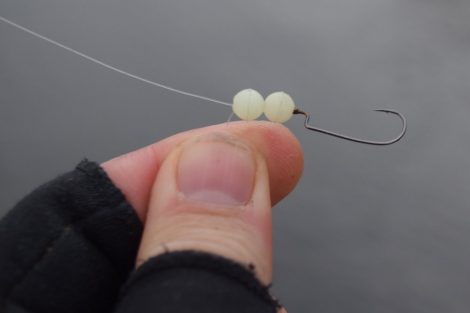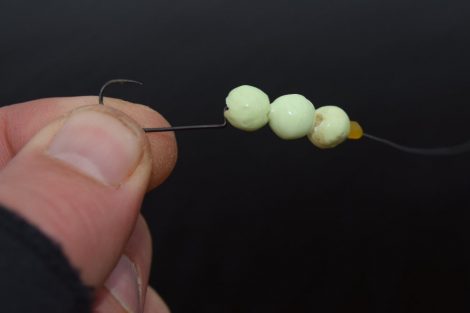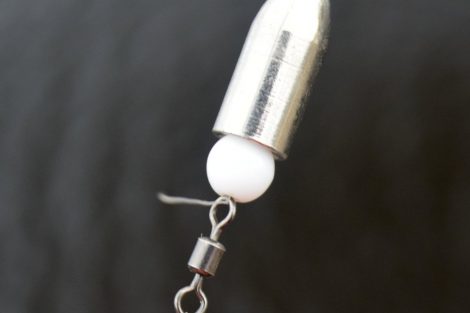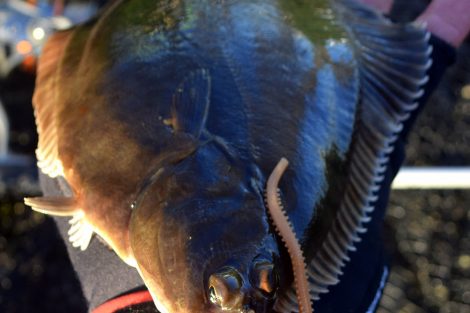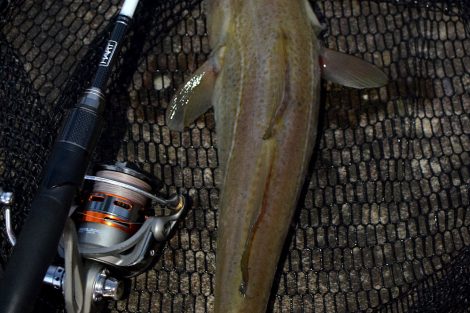Light lure fishing deepwater marks is one of my main tactics when LRFing through the winter. Deepwater has much more stable temperature conditions and can hold fish throughout the tide, which ups my chances of catching.
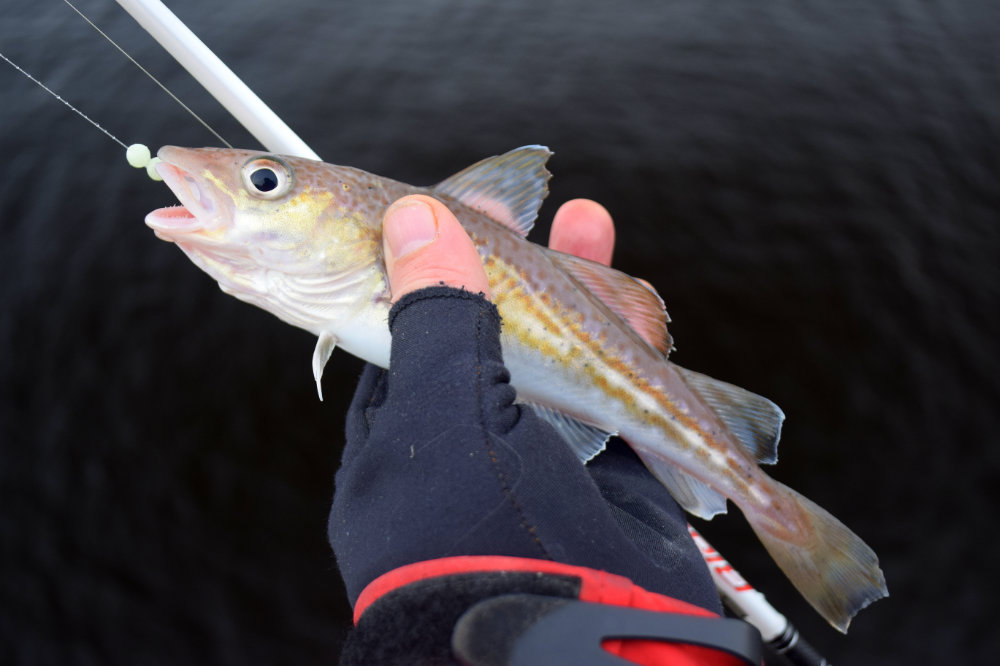
Light lure fishing deepwater rigs
Dropshot Rigs
My go-to rig for fishing the bottom area of the water column is a dropshot rig, and I find the deeper you fish, the more a luminous addition to either the lure or the rig has an effect. There are some great glow in the dark lures out there, but it is also easy to add luminosity to a standard dropshot rig.
To do this, you can incorporate a couple of luminous beads into the rig. This seems to act as an extra trigger, especially on the deepwater (30 foot plus) marks. I did a few experiments with beads, without beads and with a mini starlight, and over different sessions, the beaded dropshot rig out fished the non-beaded version.
Tying the rig is very simple. Firstly, I use some 5mm lumo beads. I slide two onto my leader and then tie my hook with a Palomar knot. However, you can use any dropshot knot. When the knot is tied, take the tag end (where you attach the weight) and thread it back through the beads. This still has all the advantages of being a rig tied directly to the mainline but also pushes the hook out from the main body of the line like a short snood. The only consideration with the bead size is whether the hook's eye can get inside the bead. Ideally, you want the bead to butt against the hook's eye without sliding onto the hook, as this can ruin the presentation and make it harder to hook fish.
As well as giving a luminous strike point for fish to see, using two beads on the rig also adds a sound element. Much like using a glass bead on a Texas rig, if you use two hard plastic beads, they tap together when the line is tightened and slackened during a typical dropshot retrieve. It's a subtle noise but one that can help attract a curious fish.
Floating Carolina Rig
The other soft lure rig I have been using is a floating Carolina rig. This, in essence, works the opposite way to my dropshot rig. After casting out and letting it sink to the bottom, I lift the rod tip and make a few quick turns with the reel. This lifts the Carolina weight and pulls the soft lure down. When I pause the retrieve, the weight stays on the bottom, and the popped-up lure gently wafts up from the seabed. It's an interesting rig and very good for when the fish are a couple of feet from the bottom.
Tying the rig is very straightforward. Simply slide a bullet weight on your leader, then add a bead and tie on a swivel. Next, attach your hook length a couple of feet or more. Next, slide on a couple of pop-up beads (enough to float your chosen lure). I like the luminous ones light lure fishing deepwater marks. Finally, tie on your hook and rig your chosen lure.
Find the features and find the fish
This old adage is spot on when you're lure fishing deepwater marks and searching for these winter fish, especially in the silty deepwater dock marks. Here my tactic when dropshotting is to cast out as far as I can and allow the rig to sink to the bottom. With my lure set a foot from the lead, I begin a gentle twitched retrieve with pauses. All the time I am retrieving, I make sure I keep the lead hard on the bottom. This is where I feel the most feedback as I retrieve, I can feel the soft resistance of the silt, and I am looking to feel a hard tap as the lead hits some sort of underwater structure. Whether it's a branch or a bunch of boulders, these small features in an otherwise flat and featureless seabed are where 90% of my bites come from. As soon as I feel a bit of structure, I concentrate my working the lure around this area. The dropshot rig is great for this, as once you feel the structure, you can gently work the lure against the lead without moving out of the possible strike zone.
Lastly, the deeper the water, the more you must overemphasise your movements to work a lure. In shallow water, tiny movements of the rod affect the lure. However, the deeper you fish, the more line you have out, which means that the bow in the line takes up much of the movement caused by current or water pressure. You don't have to go to the extent of jerking the rod so that your dropshot lead raises from the seabed, but you certainly have to exaggerate retrieves used in shallower water.


